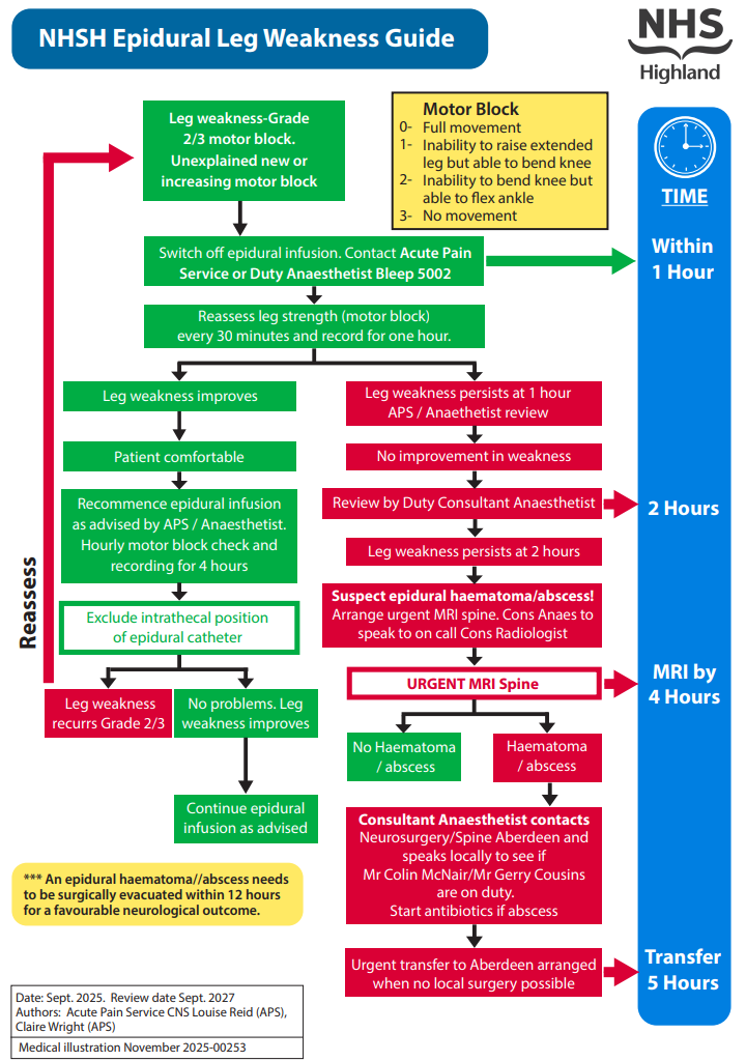Can be completed by any of the following who have received training in the use of the epidural pump: Anaesthetists; Anaesthetist assistants; Acute Pain Nurses
- Attach the infusion bag to the epidural giving set. Attach drug label to the bag.
- Programme the Epidural pump and purge the line according to the manufacturer’s instruction and as per training.
- Lock the pump using the digital access code.
- On arrival in recovery, two recovery nurses must check the pump programme against the prescription sheet to ensure that it is correct.
- Prior to discharge from recovery the pump and the prescription must be checked.
Procedure
- Epidural catheters must be inserted using full aseptic technique and should preferably be sited in theatres or ITU.
- The Acute Pain Service can advise on the epidural fixation device to be used. The use of glue as a fixation technique is recommended by the Acute Pain Service. Please contact the Acute Pain Team for further information.
- The epidural filter should be secured to the upper arm or chest wall with a padded dressing, preventing the catheter from being pulled out of the connector. If the line does become disconnected at this point (i.e. distal to the filter) the epidural catheter is inevitably contaminated and must be removed.
- Epidural bags with fentanyl must be renewed every 24 hours.
- The skin exit site should be inspected every nursing shift. If there are any signs of infection (tenderness, inflammation or exudation), the Acute Pain Nurse or ITU Anaesthetist should be informed. If the epidural is removed, the tip should be sent to bacteriology for culturing.
- After 96 hours the giving set and filter should be changed


